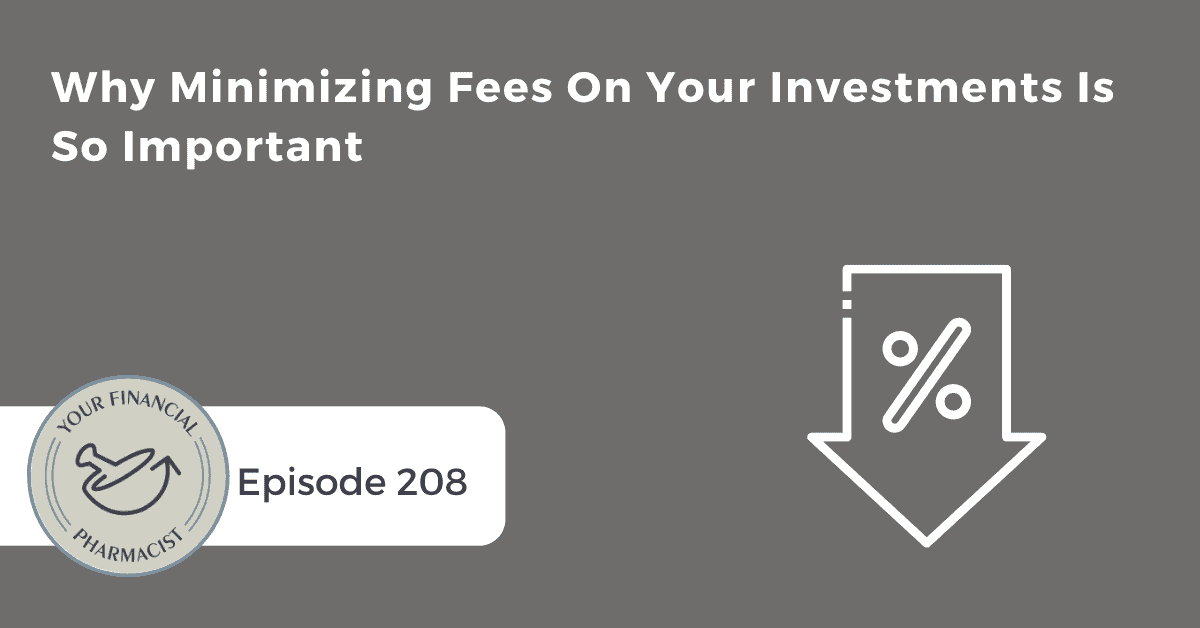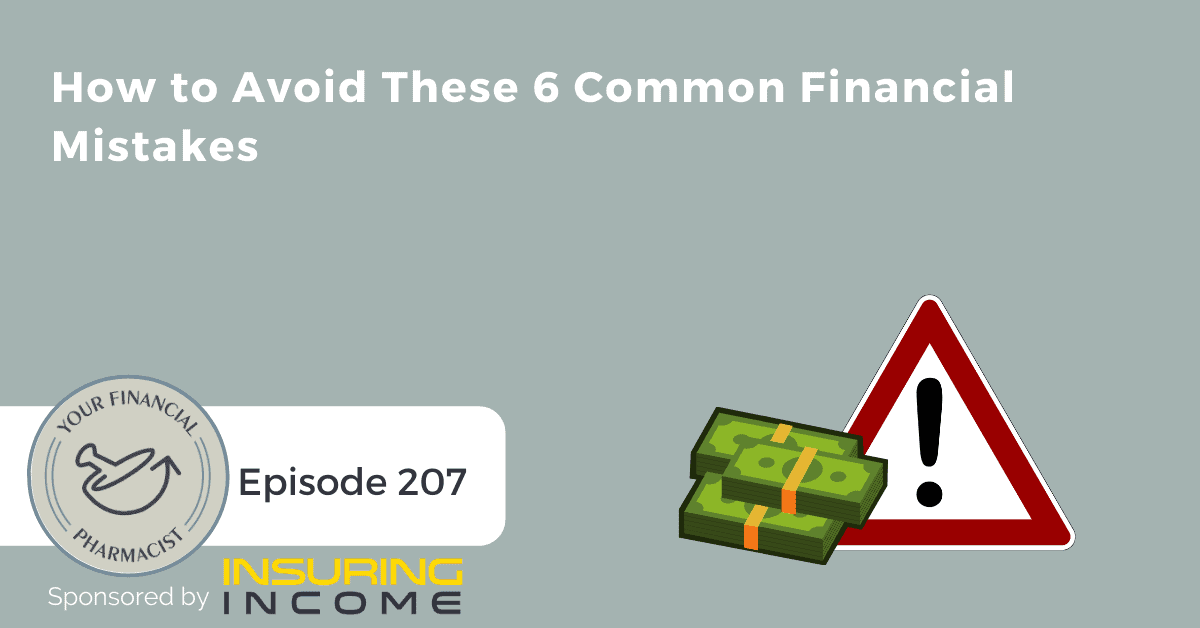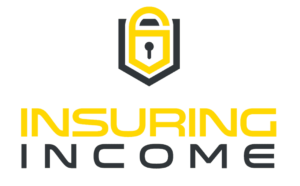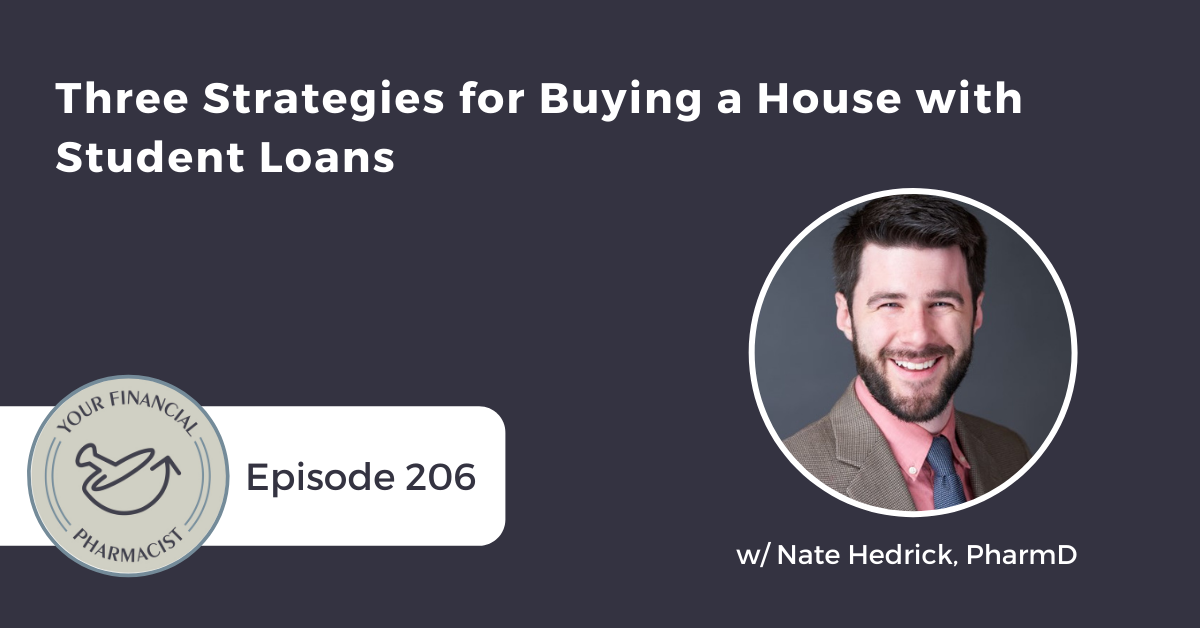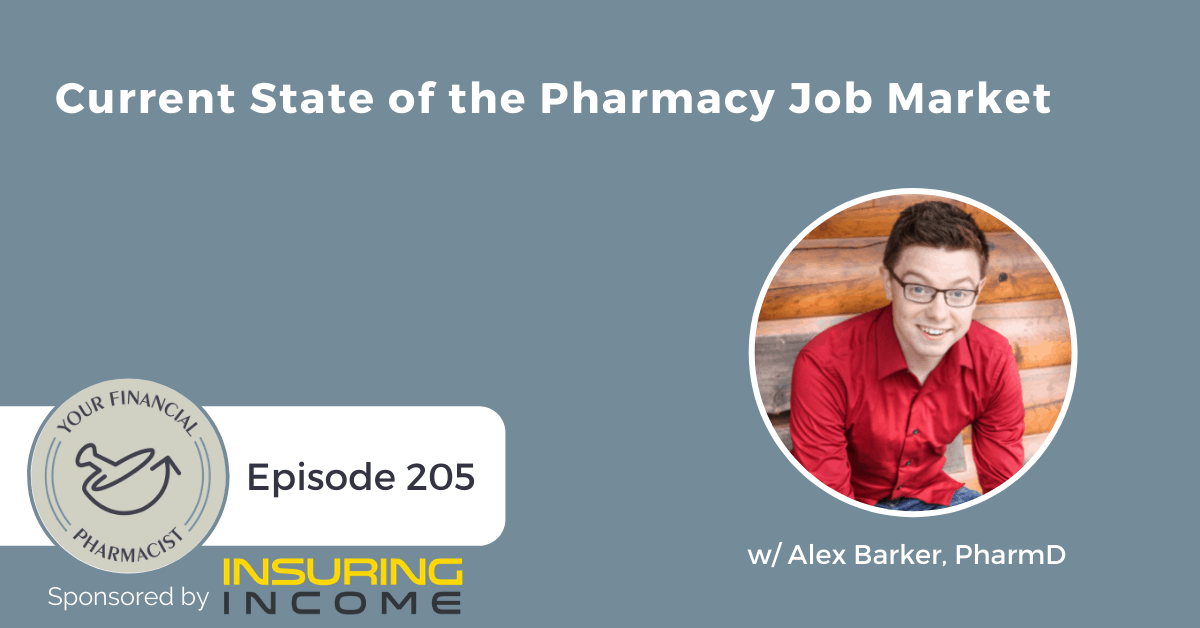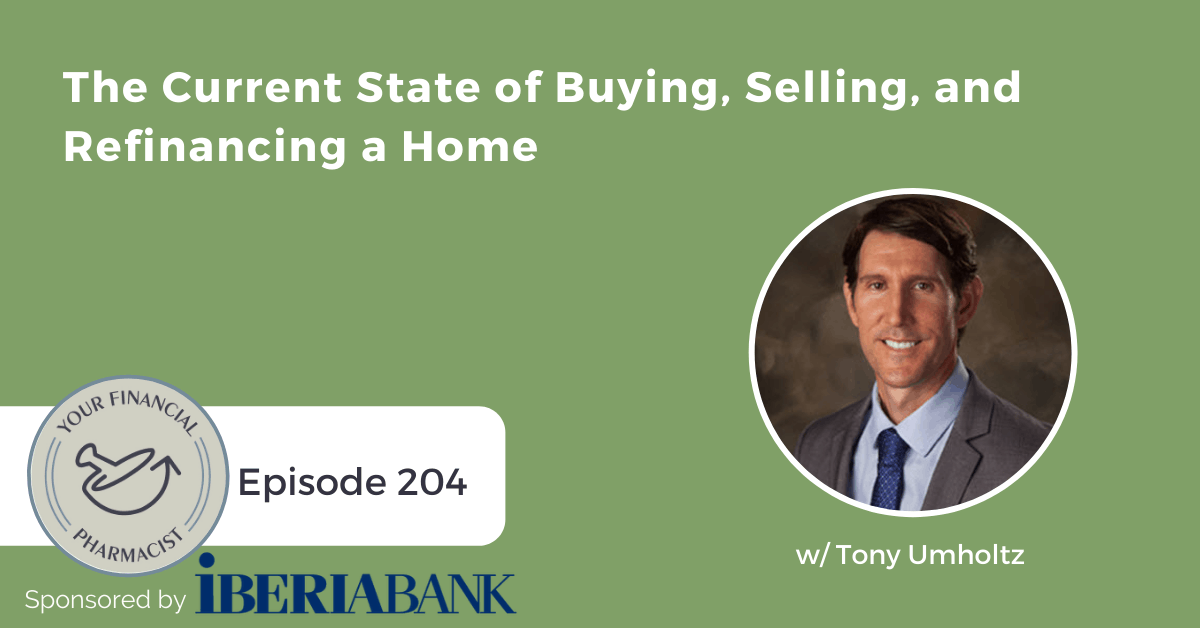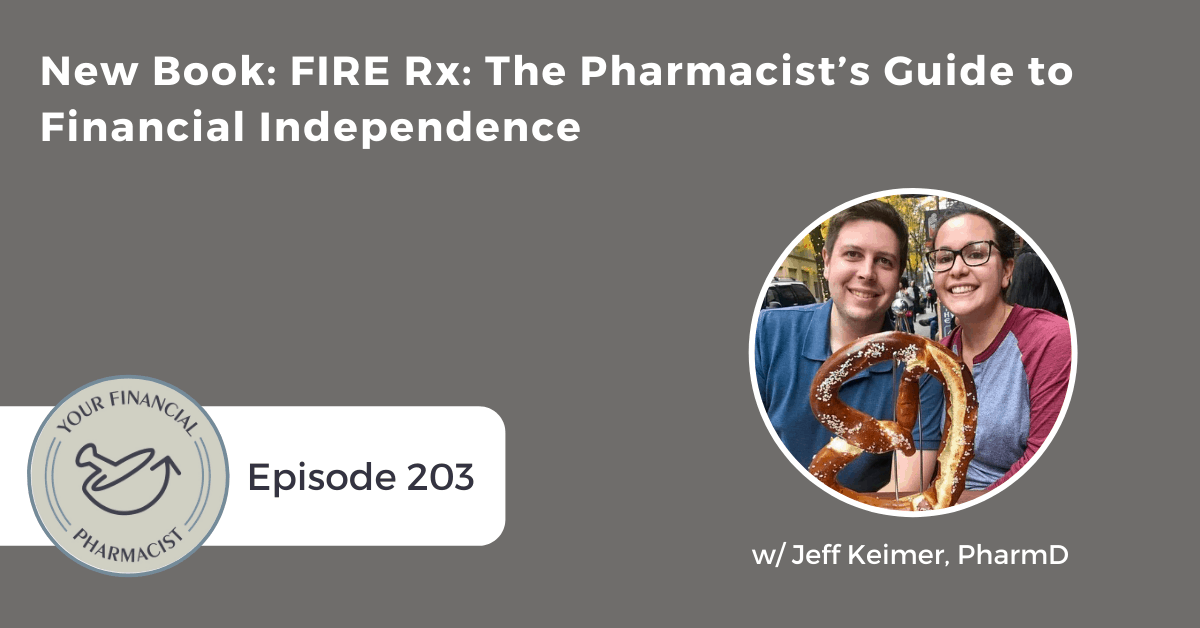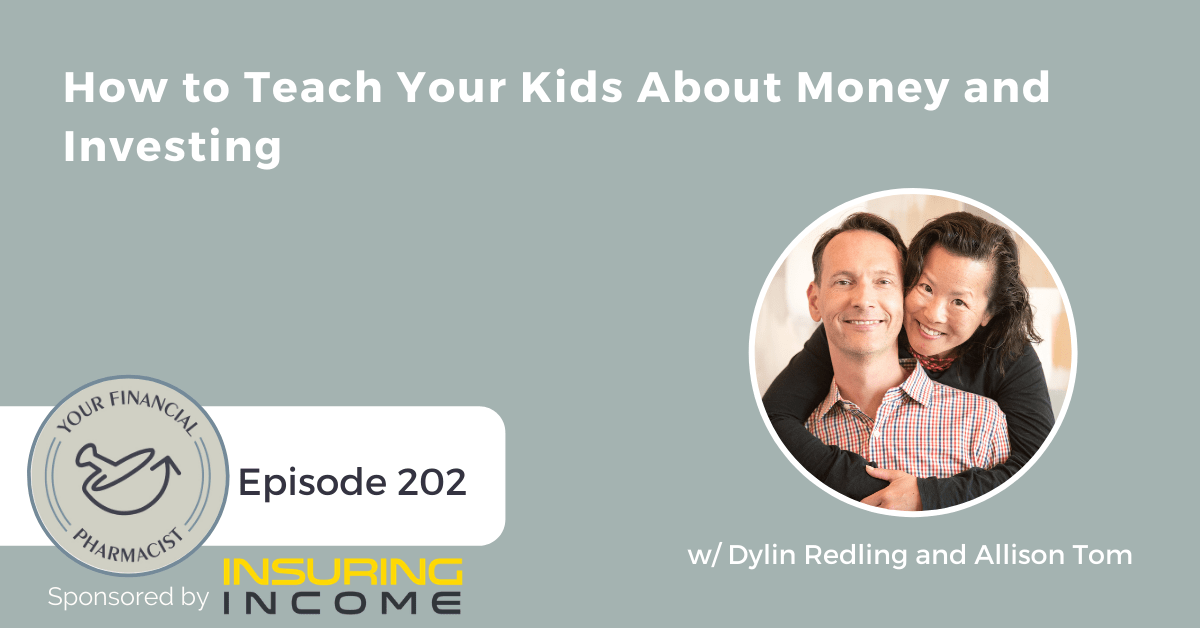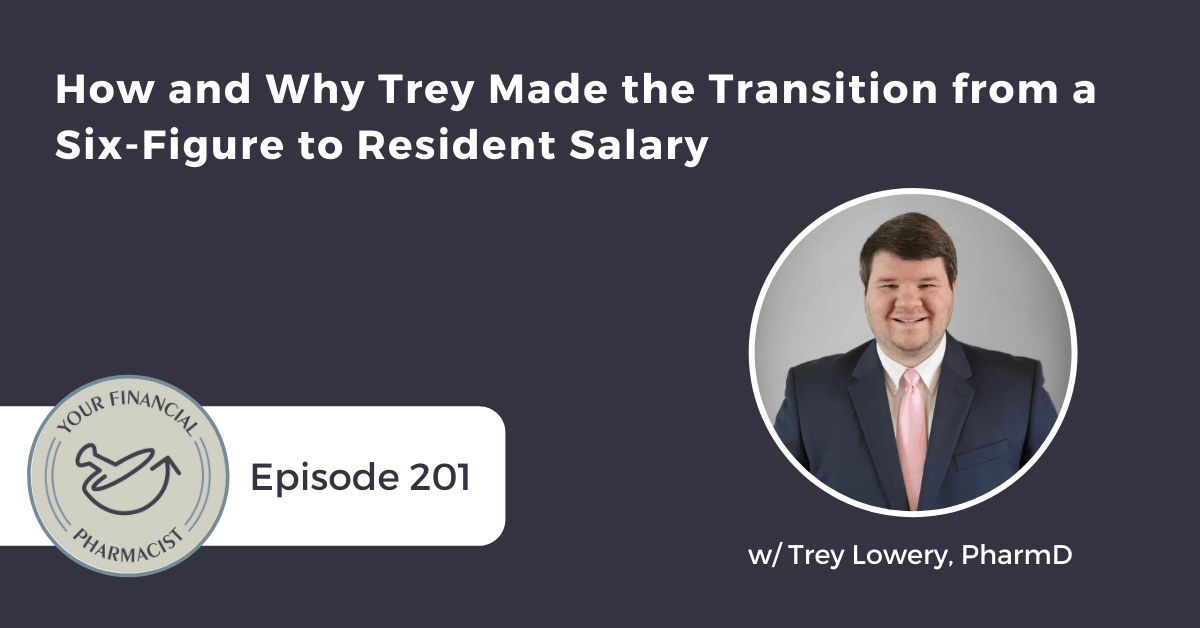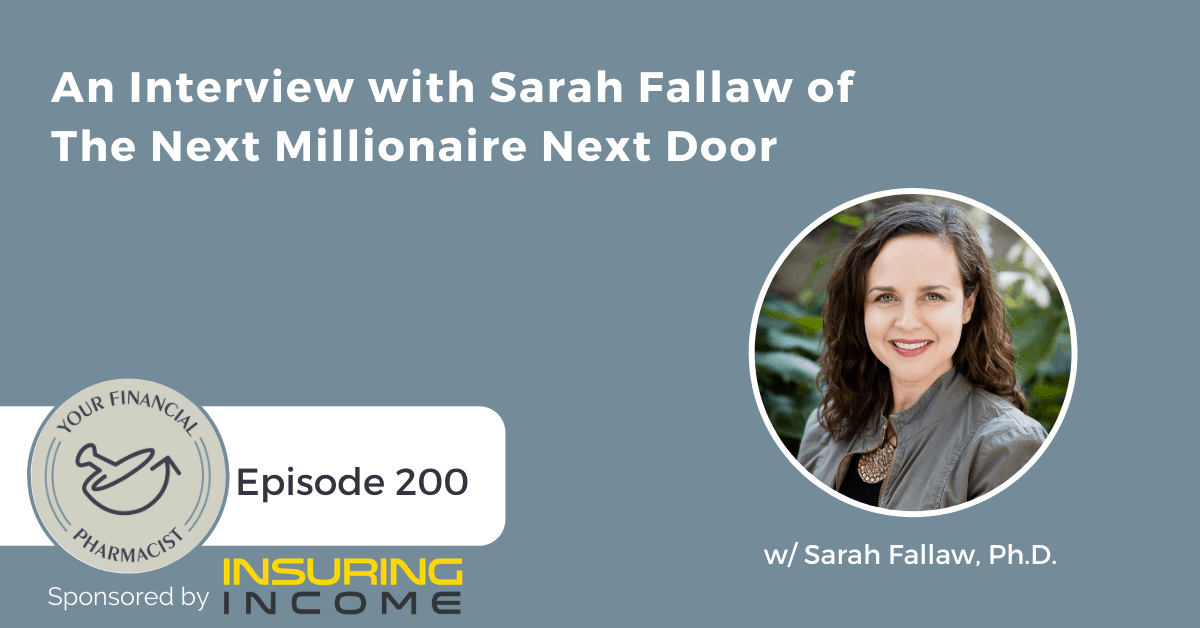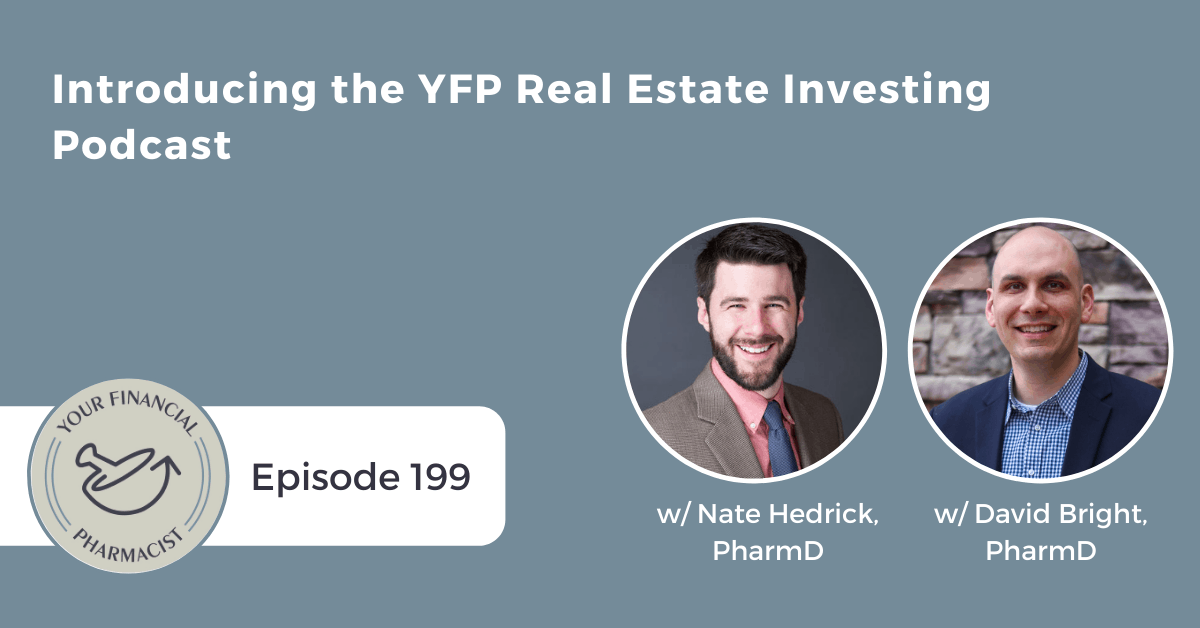Why Minimizing Fees On Your Investments Is So Important
Tim Baker digs into the f-word we want to minimize when it comes to our investments…FEES! When you do the hard work to save money, you should be interested in keeping as much of that investment intact by minimizing the fees that can take away from your long-term gains. Tim discusses various fees, the impact these fees can have on achieving your long-term savings goals, and strategies you can take to evaluate the fees related to your own investment plan.
Summary
Tim Baker discusses the many types of fees associated with your investments and their impact on your financial plan, including expense ratios, platform fees, trading fees, and advisor fees. He also breaks down the ABCs of mutual funds: A shares, B shares, and C shares and the types of fees each of these investments may include. Tim further details how these fees can impact your investments over time, affect growth, and impact your financial plan overall.
Tim discusses his experiences with clients, sharing that many do not know they are being charged various fees or do not understand the full impact the cost can be in the long term. While many fees may be challenging to uncover, Tim shares the importance of asking questions about fees, whether you are just getting started or are farther into your investment history. Investors should be asking what their fees are, why they are paying them, and the benefit – if any – they have on the investments.
Tim mentions that it’s okay to pay a fee for professional help but be wary when advisors are charging commission because there may be a conflict of interest. Tim also suggests you ask what you are getting for your fees across the board, with professional services as well as the investments themselves. Typically, the expense that you pay does not equate to increased benefits for the investor, so trimming those fees whenever and wherever possible may benefit the investor over time.
Mentioned on the Show
- YFP Planning: Financial Planning for Pharmacists
- YFP 207: How to Avoid These 6 Common Financial Mistakes
- YFP 070: Pre-Planning for Tax Season
- YFP 184: How to Optimize Your 2021 Tax Strategy
- Are You Making This $1 Million Dollar Mistake?
- Schedule a free Discovery Call with YFP Planning
Episode Transcript
Tim Ulbrich: Tim, back-to-back episodes. Good to have you on again.
Tim Baker: Yeah, good to be back. I’m excited for this episode. I think it’s going to be hopefully valuable for those that are listening.
Tim Ulbrich: Yeah, I think so. And we talked last week about common financial errors or mistakes, some that we’ve made, some we’ve seen other pharmacist clients, colleagues, make. And today, we’re talking about one that was not on that list of common mistakes we discussed last episode but certainly can have a major impact on how much wealth you’re able to build. And we’re going to talk really big numbers at the impact that fees can have, fees on the investments is going to be the focus of today’s discussion and hopefully shedding some light on a topic that maybe folks have heard about but haven’t really thought about and evaluated for their own investing plan. So Tim, one of the things I share when I talk on the topic of investing is that if you’re going to do all of the hard work to save money each and every month, take advantage of compound interest and the time value of money, then we want to do everything we can to maintain as much of the pie as possible. And I often think that there’s really three big things that can eat at our investment pie: that’s taxes — and we’ve talked about that on several episodes on the show of things that we can do from the tax-advantaged investing standpoint — inflation — obviously can be out of control to some degree — and then the third is the one we’re going to be talking about today, which is fees. And something I’ve heard you say before is that you need to follow the “Three F Rule” of 401k management. And that’s Figure out the Fees First. So that’s what we’re going to be digging into today, and that’s even beyond just the 401k when we talk about fees. So Tim, before we get too far into the weeds about this discussion of fees, let’s back up a bit as some may be thinking, fees on my investments? What fees on my investments? So talk to us a little bit about the common fees that are out there when it comes to one’s individual investment portfolio.
Tim Baker: Yeah, if I could even back up further, Tim, I would even say like the importance of this — like it shouldn’t be understated. And I think that, you know, when we — kind of like when I talk about baby stepping the financial plan, we look at things like what does the emergency fund look like, what does the consumer debt look like.
Tim Ulbrich: Yeah.
Tim Baker: When we dive in particular into the investment part of the financial plan, one of the first things I look at is fees. And you know, outside of the asset allocation, which the asset allocation being like how do I divvy up in a broad sense between like stocks versus bonds and you can actually get more granular than that, outside of the asset allocations, the fees probably play one of the biggest roles in your ability to kind of build wealth over time and really the fees, just like you mentioned along with tax and inflation, is it can really be in a factor that erodes that ability to build wealth. So it’s super important. And you know, when I look at the fees, one of the problems in the industry is that the industry is not super transparent with regard to what the investor pays. A lot of these can be wrapped up in products that are sold to investors or not necessarily appropriately disclosed on a statement. So you’re really up against it when you’re trying to figure out, OK, what exactly am I paying? And the fact that it can be a little bit opaque in that regard is frustrating. I think that’s one of the things that we work with our clients is to show them, ‘Hey, did you know that you’re paying this in your 401k?’ And most people are like, ‘I had no idea.’ Then the question is, ‘Is that good or bad?’ And I’m like, ‘Well, it’s typically higher than what we see,’ or something along those lines. So to me, the name in the game is really trying to understand — to answer the question, what are the things that you could be charged? And then like what is that exactly for your particular case? So if we look at the things that we typically see, if we look at the 401k first, you know, the things that are typically in the 401k are things like platform fees. So this might be where Fidelity or Schwab or someone might charge you a fee just to really have an account with them. And that’s less common in a 401k. You typically see them more in brokerage accounts, more in IRAs. When I was in the broker dealer world, we would charge — the custodian would charge clients just to have an account open. And a lot of this is in also response to like lower entrance environments. You know, they’re trying to make money where they can. And sometimes these additional line item fees are created. Things like trading fees and transaction fees. So this is like anytime that you buy and sell, again, typically you don’t see these inside of a 401k, but you do see these outside, like a brokerage account, an IRA, you know, if you buy stock ABC, sometimes you’ll be charged anywhere from $7 to $50 a trade. Now, these have kind of become less and less common as a lot of the custodians want to be competitive and they’ll waive fees and things like that.
Tim Ulbrich: Race to 0 here, right?
Tim Baker: Exactly.
Tim Ulbrich: Yeah.
Tim Baker: Yep. The other thing that you would see are things like advisor fees. So these can be both within inside and outside of a 401k. So these are things like, ‘Hey, I work with an advisor, and they charge me a flat 1% on the investments that they’re managing.’ It could also come in the form of commissions, and that’s a whole other ball of wax in terms of how an A share, a B share, a C share mutual fund, you typically don’t see commissions inside of a 401k, but you do see — sometimes you see C share, which are commissions, inside of a 401k. But you typically see those more in brokerage accounts, IRAs, and such that. And then probably the last one that basically permeates just about every investment is expense ratio. So the expense ratio is the money that the fund takes to kind of run the fund. So if I’m a mutual fund manager, Tim, and I’m in charge of a large cap mutual fund, you know, I’m managing billions of dollars, so I’m pulling a bunch of investors’ money together to buy large cap stocks and the like. Then I need to pay myself, I need to pay for the fancy office on Wall Street, I need to be able to pay for information. I might even need to pay sales people to go out and market my fund. So those all are basically captured in an expense ratio. So the expense ratio basically, you know, takes money out of that fund and it’s shared, that expense is shared, with the rest of the investors that are invested in it. So those are typically the broad strokes. You also see other ones I would say outside — and these kind of can get wrapped up into platform fees — but you’ll see like administrative or like bookkeeping fees in a 401k. And this could be like record keeping and all of the laws that are surrounding 401k plans and 403b’s. These can be pretty prohibitive. Sometimes they’re a flat fee, sometimes they’re a percentage. But these are kind of just administrative fees that, again, that are not listed on a — they’re not listed on a statement anywhere. It’s just part of the plan and what the plan takes to make sure it runs within the laws of the United States.
Tim Ulbrich: Tim, when I hear you say, you know — and obviously it depends on the account, you mentioned some of these may be more applicable to like an IRA, brokerage, others across the board, but several different types of fees you mentioned, right? Platform fees, advisor fees, trading fees, sometimes commission fees, expense ratios perhaps is the one that folks may be most aware of. My follow-up question is transparency and understanding of these fees. So those are two very different things to me. You know? Even if something is transparent, how it’s disclosed or how somebody may be informed of it or how easy it is to find that information obviously can lead to whether or not they may have an understanding of it. So in your experience working with clients and really more specifically our clients at YFP Planning, is this something that you find folks are surprised by? And how transparent and accessible is this information to either the individual or you as the advisor trying to work with them?
Tim Baker: Yeah, Tim, so I think it is a surprise. And what I typically try to do to kind of make it a little bit more real is put it in real dollar sense. So you know, one of the things that when we talk to pharmacy schools and we’re trying to like drive home the point that this isn’t Monopoly money, that when you graduate, you’re like at with the average student loan debt that graduates are coming out with, it’s a $2,000 payment for 10 years. And when most people think about it in that terms, you’re like, ‘Oh, OK, that becomes more real.’ So I try to do the same thing with the fees. So yeah, like when we go over this, I think at first, it’s like, ‘Oh, OK, well that doesn’t sound that bad.’ You know, so like I’m looking at this independent pharmacist, their 401k, and typically the smaller the employer, the worse the 401k is or the most more expensive it is per each participant. So like this particular pharmacist, their all-in when they look at the administrative fees and the average investment fees, it’s about 1.27%. So you’re like, ‘Wow, that doesn’t sound too bad, 1.27%.’ But if you have $100,000 in that 401k, that’s $1,270 per year that the 401k and the funds inside of the 401k basically absorbs. So with this particular client, they have $250,000 in that, so that’s a lot more. It’s a lot more money. It’s more than double that every year. And again, it’s not like it’s a line item on the statement anywhere. It’s what the 401k takes to run and the investments take to basically run the funds that they’re in. So what we really try to do is, again, look at it — and we have tools that can assess that information. But even to do it yourself — and I’ve tried to do this even outside of the tools that we use — it’s hard to find. You have to find basically the plan. Every year, they have to file what’s called a Form 5500 with the IRS that basically outlines how much money is in the fund and what are the assets, what are the liabilities, if there’s any loans, what are the admin expenses. And a lot of those are just a dollar amount that’s populated in there. So like sometimes you might see like, ‘Oh, my administrative fee is 1.2%.’ And then the next time we log into our tool, it’s 1.4% just because there’s new data that’s been filed with the IRS. So it’s a little bit of a moving target as well. And I think the — you know, I think I read a stat somewhere that the average 401k all-in expense is about like 1.68%.
Tim Ulbrich: That’s wild.
Tim Baker: So — yeah. And again, when I look at our 401k that we’ve set up at YFP, I think it’s less than .2%. I think the fees have changed a little bit for ours, but I think when you look at the expense ratio and everything, it’s less than .2%. So it’s a factor of 8. So if I’m paying $1,000 — and again, that’s a pretty large 401k with that, then I don’t want to pay $8,000 a year. So those are some of the things that most people when they say, ‘Oh, like 1.2% is not bad,’ but then when we actually put in dollars — and then if we compound that year over year, it really adds up. So to me, the fees are so important. And I think another discussion to have is like OK, but like are the fees worth it?
Tim Ulbrich: That’s right. Yep.
Tim Baker: And I would say in a lot of the cases, no. I mean, with some of these fees, you have to pay the fees to be able to like have the fund run and things like that. But in a lot of cases, if you’re paying 10x the amount in terms of an expense ratio, you’re not getting 10x the performance or it’s not 10x safer for the same amount of performance. So every type of fee is going to be different in why you would pay this versus that, but in most cases, the name of the game is to kind of shave that down as much as you can to really the investments unadulterated so it can grow and really allow you to build wealth over 10, 20, 30 years, whatever the time horizon is.
Tim Ulbrich: Yeah, and I think one of the things, Tim, I’ve heard you say often is that our job, your job, and the planning team’s job, one of the roles is to really try to keep as much of that contribution intact as possible and allow the compound growth to do its thing, right? So really minimize the fees that are coming out of that. And I think that’s so important. You know, again, back to my earlier comment, if you’re already doing the hard work, right, to put away whatever percentage of your income each and every month towards long-term savings, then why do we want to give up anything in terms of the fees? And that example you gave is really powerful, that independent pharmacist who’s got $250,000 in that account with a 1.27%, which is, as you mentioned, is lower than the average 401k. You know, that’s a little over $3,000 this year. But as that account continues to grow and compound, that $250,000 is eventually going to turn into likely $300,000 and $400,000 and $500,000 and so on. And that fee obviously will continue to go up over time. So let me ask the big and nebulous question. Like yeah, maybe a 10x fee isn’t worth or justified that you’re going to have that value, but is there a place where the fees are justified? You know, such that whatever would be the net return inclusive of fees makes the fees worth it? And how do you evaluate that decision?
Tim Baker: Yeah, I mean, I think with — so it’s going to sound a little self-serving, but I think if you’re paying an advisor, a fiduciary, a fee-only advisor, and you’re paying them say whatever percentage out of your investments to be able to do financial planning or investment management or what we do, which is very comprehensive with the tax work and really a lot of different components there, I think that the return that you get far exceeds what you pay. The idea is that our focus is on more of wealth building, not necessarily just the investments and everything else but it kind of is beyond that. When I think of the — if you take things like expense ratio as an example, I’m looking at a client who — you know, and that same client that was at 1.27%, I think when we first started working with them, it was close to 2% because there are things that you can control and there are things that you can’t control with regard to the 401k. So things that you can’t really control are things like administrative, record keeping fees. Like that’s just — you know, I always talk about with the investments in a 401k, that’s the sandbox. Like those are the toys that you can play with. There’s only 10, 20 mutual funds in there. And it’s the same thing, like with some of the fees, you can’t really effect change unless you’re small enough that you can, you work for an independent pharmacy, you can say, “Hey, boss, this 401k is pretty terrible. Can we replace it?” For bigger organizations, that’s a harder thing to go about. So you’re kind of stuck with those fees. But things that you can control somewhat are things like the expense ratio. So this particular client’s, her average investment fees are .06%. So that’s her expense ratio. But when we started, it was closer to .8%. So again, a $100,000 portfolio, just for this part of the portfolio, she’s paying $60 per year whereas before she’s paying over $800. So the reason that we did that — or how we got there is that the funds that she was in, she was selecting a lot of the funds that she heard of like American funds or I think there was like a Morgan Stanley here and JP Morgan. And these funds are more expensive as in comparison. So I’m in this particular portfolio, and I’m looking at the mid-cap fund that she was in, it’s called a Touchstone mid cap, and the ticker is TMPIX. That costs .9%. So if I had $100,000 just in this, I would be paying $900 per year. What we replaced that with was an iShares fund that basically is .05%. So .9% versus .05%. So $50 on $100,000 or $900. So like those are things that you can control. And for the most part, there’s going to be differences, especially as you get to mid and small and international funds. Like there will be some differences in performance and some differences here and there, but for the most part, you know, like if I look at those same funds and I have the data that says over the course of a year, the mid cap iShares that we put her in is up 56%. The one that was more expensive is up 33%. You know, five years, it’s pretty close, 17% with the one that we put her in, 16%. So the performance, these are things you have to look at: since inception, 10% versus 9% for that. So like there are things that you have to look at, but typically the expense that you pay is not worth it. And for things like large cap, when you click into those and you say, ‘OK, what am I actually invested in?’ So like what are the underlying funds, it’s the same stuff, Tim. It’s things like that we know about. It’s Apple, it’s Microsoft, it’s Amazon, Facebook. It’s just that if you wrap it in a more expensive wrapper, you charge 5, 6, 10x just because it’s a known entity, even though Vanguard and iShares are pretty known, there is — like from a large cap fund, it should be very cheap because everyone is invested in the same stuff. So I don’t like paying high administrative fees. I don’t mind paying like a flat dollar amount, so like there’s sometimes you see like, oh, it’s $80. OK. That’s better than .8%. Expense ratio, I don’t like paying a high expense ratio. I don’t like when advisors charge commission. I just think that there’s a conflict of interest there. So these are typically outside of the 401k. So I think it’s OK to pay a fee for professional help, but it just depends on like what do you get for that? And you know, and all of the associated fees that come with that, what do you get for that? So if there are 401k’s that charge you .2% or less and then there’s some that charge you close to 2%, that’s a big range over the course of — and are you getting 12x more value there? And I typically say the answer is no.
Tim Ulbrich: Yeah, I think it’s just a really good reminder, you know, Tim, that No. 1, not all fees are created equal. Right? So really asking yourself, what may or may not be justified with this fee? And then you know, I think really evaluating and understanding what your current fee situation is and recognizing that some of that may not be in your control, to your point, that especially for those that work for a larger organization, unless you’ve got the ear of HR and can influence those decisions, that 401k plan is probably what it is in terms of some of those fees. But within the fee options, might you have some control when it comes to expense ratio and then obviously in other accounts, IRA and so forth, then you can leverage other options to reduce those fees. Tim, I suspect that many of our listeners, especially those that are listening today that have been saving for some time, might be investing in mutual funds through various institutions to be unnamed and are paying substantial fees and, as we’ve discussed, aren’t even aware of it. So I want to take a few minutes to just break down the A, B, Cs of mutual funds. And that’s A shares, B shares, and C shares. So can you quickly define the difference between A shares, B shares, and C shares and then talk to us a little bit about what is the fees or could be the fees associated with those types of shares?
Tim Baker: Yeah, so whenever you see A shares, B shares, C shares, what you typically — think commission. So that’s — it’s a sales commission for that intermediary, the intermediary being the financial advisor, that is selling you a product, i.e. a mutual fund, in exchange for a commission. And I’ve sold these in the past, so like I’m a big proponent of fee-only. I haven’t always been a fee-only advisor. I started in the industry in fee-based, which is often confused for fee-only. A lot of the fee-only people want advisors that are fee-based to identify as fee and commission. So when I was in this model, I thought, again, I thought we were great because we didn’t have to sell a proprietary product that was with one of the big financial institutions. We could basically sell whatever we wanted. But the reality is that you want to really work with someone that is not selling on commission, in my opinion, because I think there’s a conflict of interest there. So anytime that you have the sale of a product with advice, there’s a conflict. So when you hear or see A, B, C shares — and you can typically see this, you can see this on the statement, but it’s not necessarily as intuitive as you would want it. So like I’m looking at a statement from a very big institution that I know goes and markets to pharmacists, talks to pharmacy schools, but on the statement, I see the mutual funds that this particular pharmacist was in was a Washington Mutual Investors Fund, CL A. So CL A. So that’s Class A, which that’s an A share mutual fund. So what that means is that for an A share mutual fund, these are up front basically fees or commissions with lower expense ratios. So these are typically better for long-term investors. I would say they’re not necessarily good for anybody. But the idea, Tim, is that if this particular — say you opened up an IRA with me and I basically charged you an A share commission, this particular fund I think basically charges 5.75%. So $5,000 times 5.75%, that’s a $287 commission that goes straight to me. So basically, when I look at my statement the next time, my statement is going to be like $4,700. It’s going to be $300 short. A lot of advisors don’t necessarily like to sell those because it can be very, you know, abrupt for clients. The other way to basically sell these — and I’ve never sold a B share, and I’m not sure how prevalent they are, but a B share, it’s basically, it has high exit fees for when you sell and higher expense ratios. But they convert over to A shares over basically the course of many years. So the idea is that you don’t get that kind of abrupt fee, but if you hold the investment long enough, it basically converts into an A share. And I don’t have as much experience with these and I haven’t seen these much, even on statements. But the one that I do see fairly often is called a C share. So these have higher expense ratios than A shares and a small exit fee that’s typically waived after one year. So the idea is that in that same example, if you were to basically buy, put $5,000 into a C share mutual fund, you wouldn’t necessarily get hit with a big commission up front, but what’s basically on there is — and it’s kind of built into the total expense ratio — is 12b1 fees. So this is like a marketing fee. So as the advisor, I would be making say like 1% as long as you held that investment. So it’s more of a trailing commission that you pay versus an up front commission. And these could be very prohibitive to an investor. Lots of fees that you really don’t understand how you’re paying. And the advisor is basically getting paid that marketing or that service fee over the course of however long you’ve held that investment.
Tim Ulbrich: So Tim, let me ask the question that I suspect many of our listeners are thinking, that I’m thinking individually as you describe A shares, B shares, C shares on the heels of our discussion of today’s day and age where we can obviously have an option to reduce some of those fees, whether that be up front trading fees or even ongoing expense ratios. There’s other options that are out there. What is the role, if any, for these A shares, B shares, and C shares? Like are these ever in the best interest of a client? And I say that dramatically knowing it’s not a black-and-white answer, but why would I invest in an A share, B share, or C share?
Tim Baker: So in my experience in this world, you would charge a client — and this is going to be very true for many kind of new practitioners and pharmacists that are out there that are maybe seeking help and a lot of people that are listening to this. So the industry and really why I’m here sitting in this seat and why, Tim, we’re partners, it kind of is derived from the story or the way that the industry basically operates. So when I was in the fee and commission, the fee-based world, it was — and I started working with a lot of pharmacists — the going advice was — you know, and I remember, I actually remember, I have this pivotal memory where I was talking to my mentor and I think the pharmacist couple that I was working with, they had something like $300,000 in student loans. And I was like, ‘Hey, mentor, like what do you think that we should do with this client’s?’ And basically, the advice was, to me, to how to advise the client was to say, “Hey, just tell them the loans will figure themselves out. Either a snowball or something like that, focus on the highest interest first,” which is terrible advice, Tim, as we all know, that the student loans are going to be more nuanced. And then you know, because this client maybe had like $20,000 to invest, that’s not a lot of money. So like it was sell them insurance that they didn’t need, so whether that was life or disability insurance, and then invest their IRA or something like that and then just touch base with them every couple years until they have $50,000, $100,000, $250,000, and then you can actually ‘help’ them. The problem with this model, Tim, is that it’s not a planning issue. Like we work with clients that are in their 30s that there is a lot of need there to get their investments, their debt, their cash flowing budgeting, their insurance, their credit, their taxes, all humming and working in a unified fashion that we’re really trying to take the resources that the client has and apply them in a way that is a wealthy life to them. It’s not a planning issue. It’s a pricing issue. And unfortunately, the way that the industry is set up is that, hey, unless you have investments, I can’t really do anything for you. And it’s because somebody with $20,000, that’s $200 a year on a 1% AUM versus if someone had $200,000, 1%, that’s $2,000. So money talks, right? So that’s where A share and C share and those types of commissions come into play is like typically if it was less than $50,000 or typically less than $100,000, you would charge these commissions, especially the A share, because it was a higher upfront or a C share because it was more — I want to say it was more undetected, under the radar. And then you would couple that with a crappy insurance product or disability that they might not need. Or maybe they do need, but you’re still making commission on that. And that was a way for you to help the client and make a little bit of money, feed yourself at the same time. And I don’t want to — so I also don’t want to paint a picture, sometimes especially in the fee-only community, there is this picture that’s painted that like people that charge commissions are evil. They’re not. They’re not. It’s just the difference in model. And you know, I was early enough in my career that I recognized — in financial services — that I recognized that there was a better way, and that’s being fee-only and that’s not charging these commissions. So I was able to pivot away from that. It’s not that they’re evil, it’s just that I think the model or the system that they’re in doesn’t necessarily suit itself for a lot of clients. You know, typically — we talk about this with insurance — typically the better the insurance product is for the person that’s selling it, the worse it is for the person that’s basically buying it. So there is this kind of 0-sum, so to speak. So if you’re out there and you’re like, ‘Hmm, I’m listening to Tim and I’m going to look at my statement and see,’ if you see like A’s and C’s next to your mutual fund that says Class A or just I’m looking at one that says Investo Equity and Income Funds C, I know that that particular — at that particular time, he’s being charged kind of an ongoing trail that’s eating away. And again, if he’s being serviced for that, maybe that’s worth it. But in most cases, it’s not. I wouldn’t say that there’s ever — there’s never a time — but I would say, you know, again, there are advisors out there that will work with you in a fiduciary capacity and that should be divorced from the commissions that you would make from selling a product. So one of the things that, you know, kind of longer story longer, Tim, one of the things that I talk about, when I was in the broker-dealer world, the fee-based, fee and commission world, this is the story that I tell prospects and clients is you know, I would show up to the office and I would see on my counter, I’m like, ‘Oh, this mutual fund wholesaler is going to come a-knocking.’ And that wholesaler would show up to our office in a fancy suit, he would take basically the advisors in our office, which was me and my mentor, he would take us out to a fancy dinner or a fancy lunch, I should say, he would show us fancy glossies about why his funds were so — or her funds were so great. And then he would basically say, “Hey, when your client Tim Ulbrich, when he leaves his job or if he has money on the side and he wants to roll over that Fidelity 401k, like use our funds.” And —
Tim Ulbrich: Sounds like another industry I know, Tim.
Tim Baker: Yeah, it sounds like drug rep, right? And when I say that, most people are like, ‘Oh yeah.’ But here’s the difference, Tim. Like in the medical world, my understanding is that it’s illegal for physicians to get kickbacks from pharmaceutical companies because it taints their ability to prescribe medication without the strings attached, right?
Tim Ulbrich: Absolutely. Yep.
Tim Baker: But if we compare that to my industry, the financial services, not only is it legal, it’s prevalent. So like 95% of advisors out there operate in this manner. So like now, like no one takes me out to lunch, Tim. No one takes me out to lunch because I’m not incentivized to put someone in these mutual funds because I don’t make a commission from that. So what I’m incentivized to do is to put the client in the best situation across the board, but particularly for the investments we’re talking about where they’re paying the least amount for the most gain. So like, I would get through those lunches — again, they’re not all bad. You would learn something. But you kind of felt like you needed to take a shower because you kind of — you know, they gave you something. They gave you a nice lunch, so you’re kind of like, alright, well, if this client rolls it over, you kind of feel beholden to them. And I just hated that feeling. And by the way, if you’re putting those sales rep out in the field, that costs money.
Tim Ulbrich: That’s right.
Tim Baker: Who pays for that? The investor does. And that typically means that fund that you’re investing in is going to be more expensive. So I remember having this conversation, you know, and I was talking to this old wholesaler, this experienced, I should say, wholesaler, and I’m like — and I found the kind of story to really dig deeper, and I’m like, “So how can you guys justify charging 1.5% on your large cap when I could put the client in a Vanguard fund that’s .05%?” And he started talking about like, you know — and again, there was nothing about that when I was buying because it’s literally 10x more — like it’s so much more, and I just don’t think that you get that return. So I know a little bit — kind of on a tangent there — but to me, it’s one of these things that I think as a pharmacist, these are things that you probably aren’t looking at that over the course of years really have a compounding factor, either from a negative perspective or if you can remove those, it can be very positive. So it’s important to maybe dust off your statement and look at it and really understand what you’re paying.
Tim Ulbrich: Yeah, and as we zoom out for a moment, Tim, to that point coming full circle here, don’t underestimate the long-term impact of these fees. You know, any one year, especially for those that are maybe getting started with investing and haven’t built up that large portfolio, you might look at 1%, 1.2%, 1.5% and say, ‘Eh, what’s the big deal?’ But if you look at 1.5%, as an example, versus .2% as another example and perhaps even an opportunity to get lower than that, over the long range of 30 or 35 years, that’s a big frickin’ deal.
Tim Baker: Yeah.
Tim Ulbrich: Big deal. And I wrote a blog post a couple years back that we’ll link to in the show notes really showing two side-by-side examples of somebody who’s investing over 35 years, another person same timeline, 1.5% average annual fee versus .2%, and it ends up being the difference of $1 million. And the title of that article is “Are You Making this $1 Million Mistake?” And you know, for some, maybe it’s larger. For others, maybe it’s a little bit smaller. But I think it’s so important that we uncover, understand, and begin to put a plan in place that can minimize these fees if possible wherever you have control of doing that. Tim, two perspectives I want to talk about as we wrap up this really important: And that’s first, from the perspective of, ‘Hey, I’m listening and I’m at the beginning of my investing journey. What can I do?’ And then somebody who’s listening that says, ‘You know what, I’m more in the wealth-building phase. I’ve been investing, maybe I’ve got a loose understanding of some of these fees but I’m not exactly sure. And what can I do and pivot now? And is it perhaps too late or not?’ So what would you say to those two individuals, one who’s just getting started, what tangible steps that I can take, and somebody who’s maybe a little bit later on in their journey and wondering is it too late and are there steps that I can take to help reconcile some of this issue around fees?
Tim Baker: Yeah, so I think for both of those buckets of people, I think it really goes back to what are your goals, right? So I think some people, they work with an advisor because they think that’s the right thing to do. And the advisor, you know, unfortunately sometimes it’s like every solution is the same. So everyone needs insurance and I need to make that commission. And that’s not true. I think it’s really understanding what your goals are, and that’s the first and foremost thing. And I think from there, if you’re at the beginning of the journey, I think it’s ask questions. You know, if I’m looking at my 401k statement, I want to understand why am I paying these fees? A lot of 401k’s, they have these managed solutions, and I’m like, well what do you get for that? And most of the time, it’s not a whole lot. Same thing like if you’re at the beginning and you maybe, you were contacted by an advisor in pharmacy school, chances are if you started working with them, a lot of those in mutual funds and IRAs and even — we just signed on a client that was sold this recently, and we’re like, it’s kind of a process of unwinding them. It’s really being cognizant of this and don’t sweep this under the rug. So like it’s definitely something that can compound over many, many years. So you want to get it right out of the gate. And it isn’t ever too late. So for the second, for the wealth-building phase, people that maybe have been working with an advisor for a long time or maybe their advisor is someone that’s been in the family, things have changed. So like even 10 years ago, what was offered in terms of high expenses and commissions and things like that, that day is thankfully dying with the advent of Vanguard and really trying to drive fees down and things like that. But I look at some of these well-known institutions that a lot of pharmacists work with, there’s just a better route. So like, you know, I’m looking at this particular statement, and the all-in for what this particular client was paying on commissions and everything like that was something like 1.75%.
Tim Ulbrich: Sheesh.
Tim Baker: You know? And if I compare that to like what we do, like if we were to move that into an IRA, it’s like .05%. And it almost sounds like fake. It sounds like it’s not real. But the reality is it’s like if you can get your money in a position where it’s unadulterated by those kind of hidden — and I could say they are kind of hidden because if you look at the statement and I search like “commission” or “fee,” it’s nonexistent. There might be like a fee disclaimer in the small print, but again, it’s not a line item that’s very obvious to the investor. So I would just say, like I would question, again, if you’re in a wealth-building stage, I would question what you’re currently in and if there’s a better way, just like we do with car insurance and things like that. There are opportunities out there to potentially be in a better position to again, really allow you to build money and grow wealth over time.
Tim Ulbrich: Yeah, and Tim, I would wrap up here by telling our listeners and community, whether you’re at the beginning of this journey, whether you’re in that wealth-building phase, whether you’re somewhere in between, I think this obviously is such an important topic. And we would love to have the opportunity to talk with you to see if what we offer at YFP Planning is a good fit for you and your individual plan and situation. And folks can find more by going to YFPPlanning.com, they can schedule a free discovery call. And I’m going to toot our own horn for a minute, but I’m so proud of what we have built — Tim, really what you have built starting back in the days of Script Financial, which is a fee-only comprehensive financial planning model. And one of the things I so appreciate about that model is it’s fully transparent, the fees are the fees in terms of what we charge for our services, and the client is paying our financial planning team for the advice that they’re giving related to their financial plan as a whole. So you know, whether that means we’ve got to spend a boatload of time on the investments and the retirement side of the plan, whether that’s we need to spend some time on the tax side or the insurance side or the student loan side or the home buying side, whatever would be the aspect of the financial plan, by nature, because of how that client is transparently paying for the advice and the transparency of those fees, we can spend the time where we feel like it’s most needed for the client and their financial plan and ultimately is in their best interest. And so that’s a model that I’m really proud of that we offer to the YFP community and for folks that are looking for a financial planner or perhaps re-evaluating the relationship they have currently, head on over to YFPPlanning.com and you can schedule a free discovery call. Tim Baker, great stuff, as always. And appreciate your time and expertise here as it relates to the discussion of fees and looking forward to upcoming content we have for the second half of 2021.
Tim Baker: Yeah, thanks, Tim.
Tim Ulbrich: As always, a thank you to the listeners for joining us on this week’s episode. And as we wrap up this first half of 2021, we appreciate you listening but also would appreciate if you could leave us a rating and review on Apple podcasts, which ultimately helps other people find this show. Our mission is to help as many pharmacy professionals as we can on their path towards achieving financial freedom, and one way we can do that is by reaching more people with this show. So if you haven’t already done so, please do us that favor, leave us a rating and review and ultimately that will help others find the show in the future. Thanks for joining us and have a great rest of your week.
Current Student Loan Refinance Offers
[wptb id="15454" not found ]Recent Posts
[pt_view id=”f651872qnv”]

